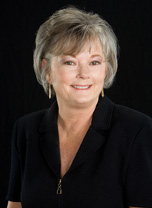Alan Kazdin: Reconsidering Clinical Psychology
 All indicators point to the need for a dramatic overhaul, says the noted scientist and APS award recipient
All indicators point to the need for a dramatic overhaul, says the noted scientist and APS award recipient
From the Observer Vol.23, No.7 September, 2010
Yale University psychologist Alan Kazdin began his James McKeen Cattell Fellow Award Address at the APS Annual Convention in a rather unusual manner. He declared that the kind of work he’s done in his career — work that not only advanced clinical interventions, but that merited the award for which he now spoke — has failed to solve the serious problem of mental illness in the United States.
“My view,” said Kazdin, “is that psychosocial interventions as currently studied, practiced, researched, and delivered, will just not have an impact on mental illness in this country.”
Recent data show that roughly 75 million people in the United States meet the criteria for a psychiatric disorder. Kazdin considers that figure a conservative one, as it doesn’t include people who fall just short of clinical diagnosis, or those whose everyday stress may require professional help. Anxiety disorders alone reportedly cost the United States $42 billion a year through loss of work productivity and health care fees.
Yet the dominant form of clinical treatment — individual psychotherapy — is too “elite” to reach a majority of the afflicted, Kazdin said. One-to-one therapy, or even small group sessions, involves high-cost models of care that require lengthy, close supervision by professionals who aren’t evenly dispersed across the country. As a result, only an estimated 20 to 30 percent of Americans who need clinical treatment receive it.
“If the goal is to reach a small number, and to exclude those in need, particularly those in minority groups, particularly those in rural areas, especially those who are elderly, especially those who are young — if that is our goal, we are doing great,” said Kazdin in jest.
The status of psychotherapy has gained wide media attention of late, largely in response to a report on the topic published in a recent issue of the APS journal Psychological Science in the Public Interest. On one side, psychological researchers want clinicians to embrace empirically tested models of treatment; on the other, therapists feel researchers are out of touch with the needs of their patients.
Kazdin said this debate distracts from the larger problem, calling both groups “out of sync with what is needed in this country to reduce the burden of mental illness.” Instead, said Kazdin, we ought to focus on new models of delivery that can reach people rather than on current psychotherapy as practiced.
“There is no way that is going to help very many people,” he said of psychotherapy. “We need multiple models of delivery and treatment.”
These models exist, said Kazdin, but they are not currently being used to their capacity. Internet programs and smartphone apps can reach people over a wide geographical base. Lay therapists, such as adolescent peers, can bring aid to young adults. Messages in everyday settings like offices, schools, and stores, can serve as new avenues of delivering interventions.
What is critical is not that all these avenues of delivery resolve every mental health problem, but that awareness of these problems becomes more readily available.
“Why treat people in everyday settings? Because that is where psychopathology is,” he said.
Treatment shouldn’t be the only focus of the effort to reach broader populations, Kazdin said. Prevention can be improved. A national database can be compiled to assess the extent of mental illness. Roles can be found for caregivers with less-than-doctoral training.
Clinical psychologists can also do a better job collaborating with those in other disciplines. Public health workers can lead population-based interventions. And a partnership with mathematics — “absolutely critical,” Kazdin said — can create models that show where to allocate resources to reach the greatest number of people in need.
Simply put, said Kazdin, clinical psychology needs a “fresh start.” The success of psychotherapy has been great, he said, but it’s time to build on that success to bring care beyond the individual level and out to the wider public.
“I began with the notion that our goal should be to reduce the burden of mental illness and psychological dysfunction in the US, and of course worldwide,” Kazdin concluded. “If that is the goal, we have to really reconsider what we’re doing.”
We’ve noticed that stress and anxiety – and the anguish it causes – is dramatically on the rise. Thought Field Therapy is now reaching more people than ever and helping to overcome fear, anxiety, trauma and addiction.
We now have an iPhone/iPad App and we’ve also launched our new e-training program with great success.
If you are new to TFT and would like to try it today, download our TFT Stress Guide here.

 I do hope you all had a chance to watch the teaser for our upcoming documentary, and read the latest issue of Tapping for Humanity. If not, click here to watch the video:
I do hope you all had a chance to watch the teaser for our upcoming documentary, and read the latest issue of Tapping for Humanity. If not, click here to watch the video: 

